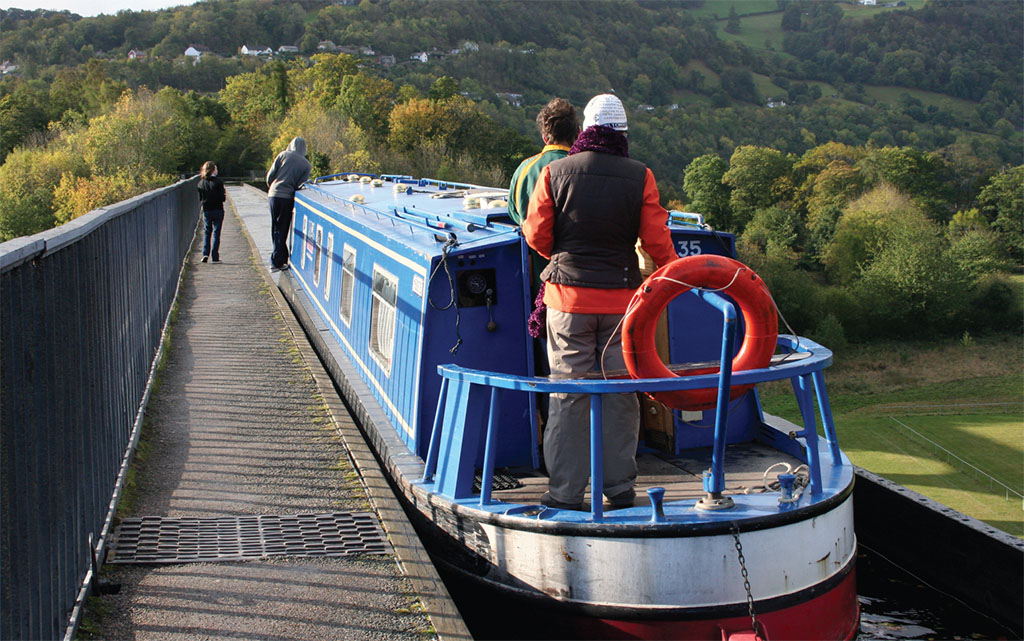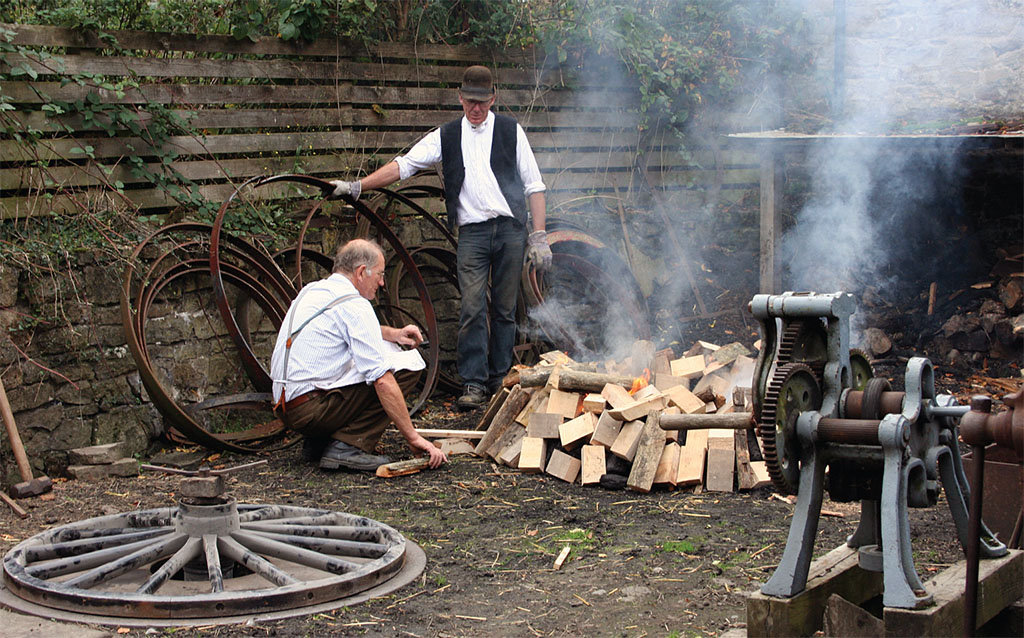
[caption id="GloriousAutumnintheWelshMarches_img1" align="aligncenter" width="231"]

DANA HUNTLEY
IT’S A LONG WAY FROM THE INNER cities still recovering from this summers’ distressing violence to the market towns and river valleys of the Marches—and it’s a lot more fun out there. I picked up the car one morning in early October and set off up the M40 and the A44 through the northern Cotswolds and the Vale of Evesham. It was 140 miles from Heathrow to Tewkesbury in the lower Severn Valley; The autumn colors were just beginning toward mellow fruitfulness.
[caption id="GloriousAutumnintheWelshMarches_img2" align="aligncenter" width="1024"]

DANA HUNTLEY
Weider History has decided to print a special issue of British Heritage reprising many of the stories from our regular series on “A Day to Visit.” At the last minute, I rejigged my autumn editorial itinerary to visit a number of those places to do new photo shoots for the stories. Over the next couple of days I got lovely picture sets of Tewkesbury, Gloucester, Hereford and Shrewsbury. What a wonderful excuse to revisit some truly lovely heart-of-England locales.
By the middle of the week, I was back on schedule, and in the small town of Llangollen in the mountains of north Wales. Home of the Llangollen Canal, Celtic ruins, an old steam railway, a picturesque abbey, gorgeous scenery, quirky history and the most famous juried choral competition in the world: what’s not to like? Llangollen has long been a favorite spot of mine. You’ll read all about it next issue in Claire Hopley’s coming feature. I was there to do the pictures.
Among my memorable moments was the Pontcysyllte Aquaduct. Crossing a gorge along the valley of the River Dee, Pontcysyllte is both the longest and highest such aquaduct in Britain, ferrying narrowboats 1,037 feet across the valley to the Shropshire Union Canal. The trough is only inches wider than the canal boats sliding down the channel. On one side, a narrow walkway allows pedestrians and folks walking alongside their boats—a single metal railing between them and a 127-foot tumble to the valley floor below. There was a steady drizzle as I hastily and gingerly made way along the walk trying to catch a narrowboat with a head start for a picture of boat-in-trough.
That evening I was recuperating with a pint in the courtyard at The Bull Inn. As it happens, it was the pub’s weekly quiz night. Along with 40-odd regulars, I got swept into the quiz, tossed my pound in the pot and found myself teamed with two transplanted Scousers (Liverpool lads). I confessed my weakness in pop music and British sports, but it didn’t matter. We swept the floor, winning by six questions. My share of the winning pot was £13.30. I wouldn’t have believed so few folk would remember there are 21 shillings in a guinea.
My next stop was Shropshire. I had a great stay in Much Wenlock, right on the edge of, yup, Wenlock Edge. The 11-mile long escarpment of hills to the southwest runs smack through the region protected as the Shropshire Area of Outstanding Natural Beauty—and it deserves that designation. I had read of it long before I first visited a generation ago—in the Victorian memories of poet A.E. Housman. In fact, my visit this time took on a decidedly Victorian cast.
[caption id="GloriousAutumnintheWelshMarches_img3" align="aligncenter" width="1024"]

DANA HUNTLEY
[caption id="GloriousAutumnintheWelshMarches_img4" align="aligncenter" width="1024"]

DANA HUNTLEY
I visited the Acton Scott Historic Working Farm, set on a northerly ridge of Wenlock Edge. The crafts, life rhythms and agricultural practices of 1900 are kept alive on a working Shropshire hill farm—the home farm of the Acton Scott estate. From draft horses and wheelwrights at work to the chickens wandering in the cobbled barnyard near the open kitchen door, it was a great visit.
The small market town of Much Wenlock would be very recognizable today to a Victorian resident. The stone and brick buildings along its few narrow principal streets have been around longer than that. And the ruins of magnificent Wenlock Priory were in ruins long before the Victorians. I stayed at a charming B&B called the Manor House and took excellent suppers at The Talbot pub on the High Street.
A few miles down the road from Much Wenlock runs Ironbridge Gorge and the gaggle of museums that adorn the Severn River valley where the Industrial Revolution had its birth. Since the 1780s people have been coming from around the world to see the first iron bridge ever built. The honeypot of those museums, though, is Blists Hill Victorian Town. If Acton Scott gave me a taste of Victorian farm life, Blists Hill seduced me with the gaslights of the town. The first stop most visitors make is at Lloyds Bank—to change their contemporary currency for the coin of Victoria’s realm.
Way leads on to way, however, and the stories of Much Wenlock and Ironbridge are for the next issues, and a couple of days later I was due in Oxford. It had been a long time since I’d paid a proper visit to the City of the Dreaming Spires. Twisted alleyways and college quadrangles, a great covered market and the bustle of England’s oldest university community: It’s all as delightful as ever. The “new” and refurbished Ashmolean Museum was as smashing as Jean Paschke shared with us (January 2011, p. 24). Of course, there’s also the Pitt-Rivers Museum, the Museum of Natural History, the Museum of Oxford and the oldest Botanic Gardens in Britain as well.
Given Oxford’s student population, it is hardly surprising that central Oxford is also a city of pubs. Whenever I’min Oxford, my personal tradition is to pay a call to the Eagle & Child in St. Giles, and take a pint in memory of C.S. Lewis, J.R.R. Tolkien and their friends, who used the pub as a regular haunt. I also sought out The Turf Tavern, more recently a favored refreshment spot of Inspector Morse and more latterly his heir apparent, Inspector Lewis. Then, there’s the Chequers, tucked down an alley of The High and one of several establishments (including the Turf) laying claim to be the oldest pub in Oxford. All of them were busy with student trade—and on a Monday evening.
From my Oxford pub crawl, I took the train to London; it’s an easy hour to Paddington Station. That evening I visited with MP Patrick Mercer and had dinner in the House of Commons. That story sits just a few pages along. Across more than 30 years of exploring and writing about Britain, I’ve had grand experiences enough to be nonplussed by most any travel adventure. Standing on the floor of the empty House of Commons, though, was a real kick. And I still had another day in London!





Comments